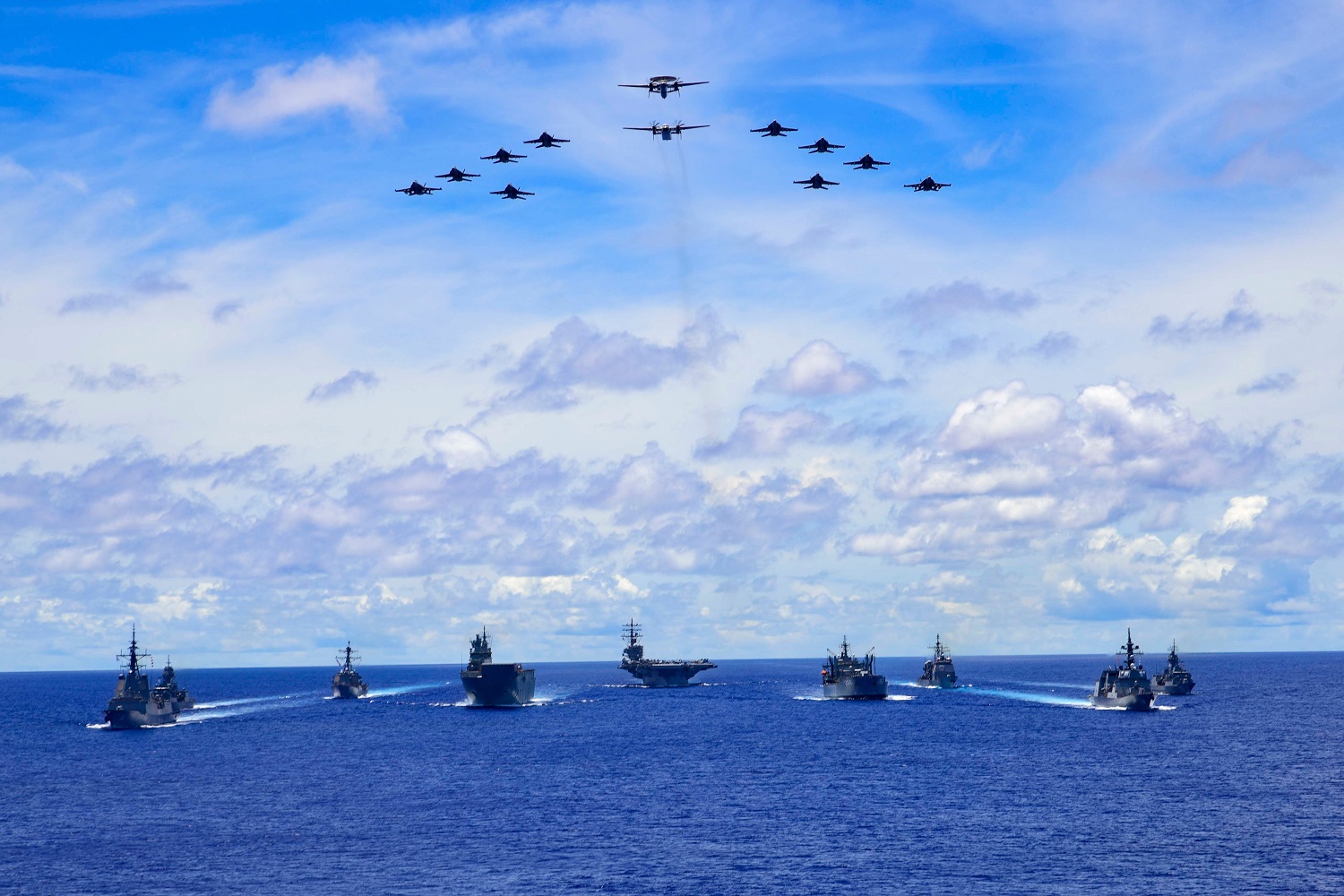The Japan Maritime Self-Defense Force (JMSDF), Australian Defense Force (ADF), and the Ronald Reagan Carrier Strike Group began a trilateral exercise in the Philippine Sea, July 19. U.S. Naval forces routinely operate alongside regional allies, strengthening shared commitments to regional stability, and a free and open Indo-Pacific through integrated training and cooperation. Throughout the cooperative exercise period, participants will operate and train together, exercising integrated maritime operations in an all-domain warfighting environment. Professional integrated engagements allows the U.S. Navy and allies the opportunity to build upon existing strong relationships and improve collective readiness and response to any situation.
“The opportunity to work alongside the U.S. and Japanese is invaluable,” said Commodore Michael Harris, commander, Australian Joint Task Group. “Maintaining security and safety at sea requires navies to be able to cooperate seamlessly. The combined tasking between our navies demonstrates a high degree of interoperability and capability between Australia, the U.S. and Japan.”
“I believe strengthening cooperation with the U.S. Navy and Royal Australian Navy is vitally important for Japan, and also contributes to a Free and Open Indo-Pacific in the region,” said Capt. SAKANO Yusuke, commander, Escort Division 4. “The experience in this exercise will give us tactical and operational advantages and make our friendships stronger, in addition to our regular joint exercises with both like-minded navies.”
Australia and Japan have both fostered long-standing alliances with the United States. This year also marks the 60th anniversary of the treaty of mutual cooperation and security between the United States and Japan. The Ronald Reagan Carrier Strike Group, consists of Carrier Air Wing 5, the Ticonderoga-class guided-missile cruiser USS Antietam (CG 54), and Arleigh Burke-class guided-missile destroyer USS Mustin (DDG 89). The ADF Joint Task Group comprises HMA Ships Canberra (L02), Hobart (DDG 39), Stuart (FFH 153), Arunta (FFH 151), and Sirius (O 266). Participating from the JMSDF is JS Teruzuki (DD 116). The Ronald Reagan Carrier Strike Group is the U.S. Navy’s only forward-deployed strike group and one of America’s most visible symbols of resolve. Operating together alongside allies from the ADF and JMSDF strengthens each nation’s collective commitment to international rules-based order.















